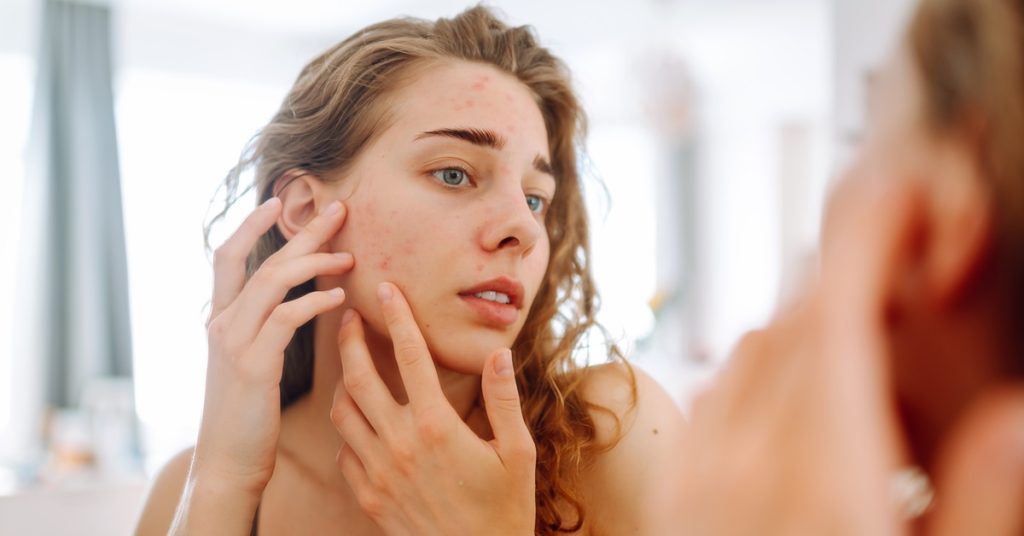A Marietta Dermatologist’s Guide to Photodynamic Therapy

Welcome to “A Dermatologist’s Guide to Photodynamic Therapy in Marietta.” As experienced dermatologists, we understand that skin health can significantly impact your confidence and well-being. With advancements in medical technology, Photodynamic Therapy (PDT) has emerged as a highly effective treatment for various skin conditions.
Whether you are dealing with acne, sun damage, or even pre-cancerous growths, PDT could potentially be a game-changer in your skincare journey.
What is Photodynamic Therapy?
Photodynamic Therapy (PDT) is a non-invasive treatment offered at DESSNA in Marietta that uses a combination of light and a special photosensitizing agent to treat a variety of medical conditions such as skin cancer, acne, and macular degeneration. PDT is an effective therapy method that is used to destroy abnormal tissue such as cancerous cells, which makes it an attractive alternative to conventional cancer treatment methods such as chemotherapy and radiation therapy.
How does Photodynamic Therapy Work?
During Photodynamic Therapy at our Marietta office, a photosensitizing agent is applied to the skin or injected into the bloodstream. Once the agent is absorbed by the abnormal cells, a special light source is used to activate the agent, which generates a type of oxygen that destroys the abnormal cells. PDT is a selective therapy method in which only the cells that have absorbed the photosensitizing agent are destroyed while the surrounding healthy tissue remains unaffected.
PDT can be administered in a variety of ways depending on the location and type of the abnormal tissue being treated. For example, PDT for skin cancer may involve applying a photosensitizing cream to the affected area, which is then activated with a special light source. On the other hand, PDT for cancer of the esophagus may involve the use of special endoscopes that insert the light source and the photosensitizing agent directly into the body.
Photodynamic Therapy offers our Marietta patients several advantages over traditional cancer treatment methods such as chemotherapy and radiation therapy. PDT is minimally invasive and has fewer side effects than traditional therapy methods. Additionally, it can be repeated several times if necessary, and there is no radiation exposure associated with PDT.
Consultation with a Dermatologist
Before undergoing Photodynamic Therapy, you will be required to schedule a consultation with one of our Marietta board-certified dermatologists. The dermatologist will evaluate your skin condition and determine if you are a suitable candidate for PDT. During the consultation, you should disclose any medical conditions or medications you are currently taking. It is important to inform the dermatologist of any allergies or sensitivities to medications or light as well.
Preparing Your Skin for PDT Treatment
To prepare for your Photodynamic Therapy treatment at our Marietta office, you must follow several instructions given by your dermatologist. One week before the treatment, you may be required to stop taking vitamin A supplements or applying any topical creams to the affected area. On the day of the treatment, you should avoid applying any makeup, moisturizers, or perfume on the treated area. It is recommended to wear loose clothing and a wide-brimmed hat to protect the skin from sunlight after the treatment.
What to Expect During PDT
During your Photodynamic Therapy treatment at our Marietta office, a photosensitizing agent is applied to the affected area of the skin. This agent is then activated by a specific type of light, which destroys the targeted cells. The procedure can last anywhere from 15 minutes to several hours, depending on the extent of the condition being treated.
Administering the Photosensitizing Agent
The photosensitizing agent is typically applied directly to the affected area of the skin. In some cases, it may also be injected into the bloodstream. The agent is then absorbed by abnormal cells in the body. You may experience some discomfort during this process, such as a tingling or burning sensation.
PDT for Skin Cancer
Photodynamic Therapy is a common treatment option among our Marietta patients for certain types of skin cancer, such as basal cell carcinoma and squamous cell carcinoma. It is considered a highly effective method for eliminating cancer cells while minimizing damage to healthy tissues. In some cases, PDT may be used in combination with other treatment methods, such as surgery or radiation therapy.
Monitoring Skin Reaction and Healing
After undergoing Photodynamic Therapy at our Marietta office, you should monitor the treated area for any changes or unusual signs, such as redness, swelling, or blistering. It is essential to follow up with your dermatologist to track the progress of healing and ensure that there are no complications.
Pain Management and Discomfort
You may experience discomfort after the PDT procedure, such as a burning or stinging sensation. Over-the-counter pain relievers can help alleviate any pain or discomfort.
Protecting Your Skin from Sunlight
After your Photodynamic Therapy treatment at our Marietta office, it is crucial to protect the skin from sunlight by wearing loose clothing and a hat with a wide brim. You should avoid exposure to sunlight for at least 48 hours after the procedure and ensure that you follow your dermatologist’s specific instructions for aftercare.
Side-Effects and Potential Risks
Although PDT is generally considered safe, some side effects can occur. These can include redness, swelling, and burning sensations in the treated area. In rare cases, blisters may form, or the skin may become discolored. Skin infections and scarring are also possible but very rare.
How to Prevent Complications
To reduce the risk of complications, we advise our Marietta Photodynamic Therapy patients to follow their dermatologist’s instructions carefully. For example, you should avoid sun exposure for at least 48 hours and avoid applying any creams or makeup to the treated area. If any adverse effects occur, you should contact your dermatologist immediately.
Advantages of PDT
- Non-invasive and targeted treatment: PDT is a non-invasive and targeted therapy. It means that the procedure only affects targeted cells without damaging healthy tissues, making it a safer alternative to traditional cancer treatment methods.
- Minimal scarring and quick healing: PDT usually has minimal scarring and rapid healing compared to other cancer treatment methods. Patients can resume their normal daily activities within a few days after the procedure.
Suitable Candidates for Treatment
Photodynamic Therapy is suitable for our Marietta patients with early-stage skin cancer, actinic keratoses, and some types of acne. You should discuss your skin condition with one of our Marietta dermatologists to determine if Photodynamic Therapy is a viable treatment option for you.
Effectiveness in Treating Different Skin Conditions
While PDT is effective in treating some skin conditions, it may not be the best option for everyone. You should ask your dermatologist about other available treatment options for your skin condition.
Costs and Insurance Coverage
The cost of PDT varies depending on the skin condition and the duration of your Photodynamic Therapy treatment at our Marietta office. You can discuss the payment options and payment plans with your dermatologist.
Insurance coverage for PDT treatments may depend on your insurance carrier, type of skin condition, and severity of the skin condition. You should contact your insurance provider to inquire about coverage for PDT treatments.
Frequently Asked Questions
- What is Photodynamic Therapy? Photodynamic Therapy is a medical treatment that uses a combination of a photosensitizing agent and a specific type of light to selectively destroy abnormal cells, such as cancer cells or precancerous cells.
- How does Photodynamic Therapy work? PDT involves administering a photosensitizing agent either orally or through injection. The agent is absorbed by abnormal cells. Then, a specific wavelength of light is used to activate the agent, triggering a process that produces reactive oxygen species, which ultimately destroy the targeted cells.
- What conditions can be treated with Photodynamic Therapy? At our Marietta office, we use Photodynamic Therapy to treat certain types of skin cancers, including basal cell carcinoma and squamous cell carcinoma. It can also be used to treat actinic keratosis, a precancerous skin condition, as well as other dermatological conditions like acne and psoriasis.
- Is Photodynamic Therapy painful? During the PDT procedure, patients may experience some discomfort or a burning sensation at the treatment site when the light is applied. However, pain can usually be managed with local anesthesia or cooling techniques.
- Are there any side effects of Photodynamic Therapy? For our Marietta patients, common side effects of Photodynamic Therapy include redness, swelling, and peeling of the skin in the treated area. Temporary sensitivity to sunlight is also expected. In rare cases, blistering, scarring, or changes in skin pigmentation may occur.
- How long does a Photodynamic Therapy session take? The length of a Photodynamic Therapy session at our Marietta office can vary depending on the area being treated and the specific condition. Generally, treatment sessions can range from a few minutes to a couple of hours.
- How many PDT sessions are typically required? The number of Photodynamic Therapy sessions required at our Marietta office depends on the condition being treated. For skin cancers, multiple sessions may be necessary, scheduled over a few weeks.
- Is Photodynamic Therapy covered by insurance? Coverage for PDT can vary depending on the insurance provider and the specific condition being treated. It is advisable to check with your insurance company to determine coverage and any associated requirements.
- Are there any restrictions after undergoing Photodynamic Therapy? It is important to avoid direct sunlight and bright indoor light for a specified period after PDT, as the treated area may remain sensitive to light. Sun protection measures, such as wearing protective clothing and using sunscreen, are typically recommended.
- Who is eligible for Photodynamic Therapy? The eligibility for PDT depends on the specific condition and the patient’s overall health. A dermatologist or healthcare professional can assess whether PDT is a suitable treatment option for an individual.
Take Control of Your Skin Health Today
Don’t let skin cancer, acne, and macular degeneration steal your confidence or hinder your everyday activities. With Photodynamic Therapy at DESSNA in Marietta, we offer a promising, non-invasive treatment to effectively manage and treat these skin conditions.
Isn’t it time you put yourself first? Contact us today to schedule an appointment and let our team of skilled Marietta-based dermatologists guide you on your Photodynamic Therapy journey to healthier, rejuvenated skin.
Sources
- Photodynamic therapy as a useful treatment approach for some cancers
- Photodynamic therapy: past, present and future
- Photodynamic therapy of cancer: an update
- Photodynamic therapy for cancer
- Photodynamic therapy – ScienceDirect
- Basic principles of photodynamic therapy
- A review of progress in clinical photodynamic therapy
- Photodynamic therapy – The Clinics: Dermatology
- Photodynamic therapy – American Society of Clinical Oncology



